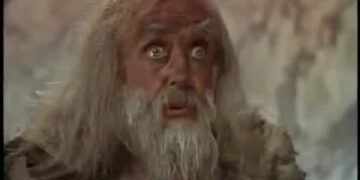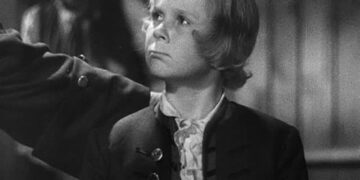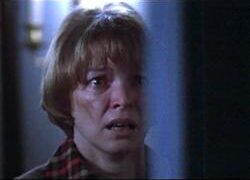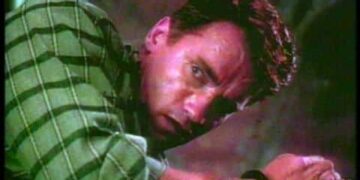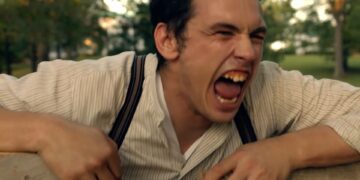Far from the Madding Crowd is a classic novel written by Thomas Hardy in 1874.
The tale follows the life of Bathsheba Everdene, a strong and independent woman who inherits her uncle’s farm and must navigate the complexities of love and responsibility.
The novel has been adapted into various film and television productions over the years, with the most notable being the 1967 British film directed by John Schlesinger.
This comprehensive analysis will explore the book’s themes, characters, and adaptations, providing a complete overview for those interested in delving deeper into the world of Far from the Madding Crowd.
A Brief Overview of Thomas Hardy’s Life and Works
Thomas Hardy (1840-1928) was an English novelist and poet, known for his vivid descriptions of rural life and his keen sense of the tragic nature of human existence.
Born in Dorset, England, Hardy’s upbringing was marked by a love of literature and a deep connection to the countryside. His works often showcase the harsh realities faced by rural communities and the inevitable decline of traditional ways of life.
In addition to Far from the Madding Crowd, Hardy authored several other notable novels, including The Mayor of Casterbridge (1886), Tess of the d’Urbervilles (1891), and Jude the Obscure (1895).
His literary output also includes numerous poems, short stories, and essays. Despite facing criticism for the bleak nature of his work, Hardy’s literary legacy endures as an essential aspect of 19th-century British literature.
Far from the Madding Crowd: Book Summary
Far from the Madding Crowd tells the story of Bathsheba Everdene, a young woman who inherits her uncle’s farm in the rural English countryside.
Through her journey, Bathsheba becomes entangled in a love triangle with three very different men: Gabriel Oak, a steadfast and reliable shepherd; William Boldwood, a wealthy but emotionally distant landowner; and Sergeant Francis “Frank” Troy, a dashing but reckless soldier.
As Bathsheba struggles to navigate her newfound responsibilities and relationships, she is confronted with various challenges, both personal and professional.
The novel explores themes of love, loyalty, and the importance of maintaining one’s independence in the face of societal expectations.
Who’s Who: Main Characters and Their Roles
- Bathsheba Everdene: The protagonist of the novel, Bathsheba is a strong, independent woman determined to succeed in a male-dominated world. She is torn between her feelings for the three men who vie for her affections and her desire to maintain her independence.
- Gabriel Oak: A hardworking shepherd, Gabriel is loyal and steadfast in his devotion to Bathsheba. Despite his initial romantic interest in her, he ultimately decides to support Bathsheba’s endeavors as a friend and confidant.
- William Boldwood: A wealthy but emotionally reserved landowner, Boldwood becomes infatuated with Bathsheba after receiving an ill-advised Valentine’s Day card from her. His passion for Bathsheba leads him to make rash decisions with grave consequences.
- Sergeant Francis “Frank” Troy: A charming but reckless soldier, Troy seduces Bathsheba with his charisma and good looks. However, his selfishness and impulsiveness ultimately reveal his true nature and lead to tragedy.
When and Where: Setting and Film Locations
Far from the Madding Crowd is set in the fictional county of Wessex, a rural region in the southwest of England.
The novel takes place during the mid-19th century, a time of great social and economic change in England.
The 1967 film adaptation was shot on location in Dorset, the region that inspired Hardy’s Wessex.
Key locations include Mapperton House, a historic manor house that serves as the setting for Bathsheba’s farm, and the picturesque village of Evershot.
Unveiling the Plot: Ending Explained
As the novel progresses, Bathsheba’s love triangle comes to a head.
She impulsively marries Sergeant Troy, only to discover that he had been engaged to a young woman named Fanny Robin, who tragically dies after giving birth to Troy’s child.
Overwhelmed by guilt and grief, Troy abandons Bathsheba and is presumed dead when his clothes are found near the ocean.
In the aftermath of Troy’s disappearance, Boldwood becomes increasingly obsessed with the idea of marrying Bathsheba.
At a Christmas party, he pressures her into agreeing to marry him if Troy does not return within six years. However, Troy reappears at the party, and Boldwood, driven mad by jealousy, shoots and kills him.
Boldwood is subsequently arrested and sentenced to life in prison.
In the wake of these tragic events, Bathsheba finally recognizes the depth of her feelings for Gabriel Oak. The two marry, and the novel ends with the promise of a stable, loving partnership based on mutual respect and understanding.
Comparing the Book and the Film: Differences and Similarities
The 1967 film adaptation of Far from the Madding Crowd, directed by John Schlesinger, remains relatively faithful to the source material. However, there are some notable differences, including the omission of certain subplots and minor characters.
One key difference is the portrayal of Bathsheba’s character. In the novel, she is depicted as a complex, flawed individual whose actions are often driven by pride and impulsivity.
In contrast, the film presents her as a more sympathetic and likable figure, with greater emphasis placed on her strength and resilience.
The film also streamlines some of the novel’s subplots, such as the relationship between Sergeant Troy and Fanny Robin. While this simplification allows for a more focused narrative, it can also be seen as a loss of some of the novel’s depth and complexity.
Overall, the film adaptation captures the essence of Hardy’s novel and provides an engaging visual representation of the story, even if certain aspects are altered or omitted.
Memorable Quotes from Far from the Madding Crowd
- “It is difficult for a woman to define her feelings in language which is chiefly made by men to express theirs.”
- “And at home by the fire, whenever you look up, there I shall be—and whenever I look up, there will be you.”
- “Well, what I mean is that I shouldn’t mind being a bride at a wedding if I could be one without having a husband.”
- “Bathsheba loved Troy in the way that only self-reliant women love when they abandon their self-reliance.”
- “In making even horizontal and clear inspections, we color and mold according to the wants within us whatever our eyes bring in.”
The Musical Backdrop: Richard Rodney Bennett’s Soundtrack
The 1967 film adaptation features a beautiful and evocative soundtrack composed by Richard Rodney Bennett, a renowned British composer known for his work in film and television.
The score reflects the pastoral and emotional themes of the story, with lush orchestrations and memorable themes that enhance the cinematic experience.
The soundtrack was nominated for an Academy Award for Best Original Score, further highlighting its impact on the film’s success.
Interesting Facts and Curiosities about Far from the Madding Crowd
- The title of the novel is taken from a line in Thomas Gray’s poem “Elegy Written in a Country Churchyard”: “Far from the madding crowd’s ignoble strife, Their sober wishes never learn’d to stray.”
- Thomas Hardy’s fictional county of Wessex was inspired by the real-life region of Dorset, where he was born and raised.
- The character of Bathsheba Everdene is said to have been inspired by Hardy’s first wife, Emma Gifford.
Dressing the Part: Tips for Cosplay and Dressing Like the Characters
If you’re a fan of Far from the Madding Crowd and want to dress like your favorite characters, here are some tips to help you capture their unique style:
- For Bathsheba Everdene: Victorian-inspired dresses, shawls, and bonnets are key. Look for clothing that captures the essence of the 19th-century English countryside, with an emphasis on practicality and modesty.
- For Gabriel Oak: Opt for simple, durable work clothes like a shepherd’s smock, trousers, and boots. A shepherd’s crook and a wide-brimmed hat will complete the look.
- For William Boldwood: A tailored suit, waistcoat, and cravat will help you embody this wealthy landowner. Don’t forget a pocket watch and a top hat for added refinement.
- For Sergeant Francis “Frank” Troy: A red military jacket, trousers, and boots will help you capture Troy’s dashing soldier persona. Add a sword and a charismatic smile for the full effect.
The Legacy of Far from the Madding Crowd: Remakes, Sequels, and Spin-offs
Far from the Madding Crowd has enjoyed a lasting legacy, with numerous adaptations in film, television, and even stage productions.
Some notable adaptations include:
- The 1967 film directed by John Schlesinger, starring Julie Christie, Terence Stamp, Alan Bates, and Peter Finch.
- A 1998 television film directed by Nicholas Renton, starring Paloma Baeza, Nathaniel Parker, Jonathan Firth, and Nigel Terry.
- A 2015 film directed by Thomas Vinterberg, starring Carey Mulligan, Matthias Schoenaerts, Michael Sheen, and Tom Sturridge.
While there have been no official sequels or spin-offs of the novel, its enduring popularity has inspired countless retellings and reinterpretations of the story.
Exploring John Schlesinger’s Other Works
John Schlesinger (1926-2003) was a British film director known for his distinctive and often controversial approach to filmmaking.
In addition to Far from the Madding Crowd, some of his most notable films include Midnight Cowboy (1969), Sunday Bloody Sunday (1971), and Marathon Man (1976).
Schlesinger’s work spans a variety of genres and themes, but his films are often characterized by their focus on complex, flawed characters and their exploration of social and political issues.
Delving Deeper into Thomas Hardy’s Literary Universe
If you enjoyed Far from the Madding Crowd, you may want to explore some of Thomas Hardy’s other novels and works.
Some recommendations include:
- Tess of the d’Urbervilles (1891): A tragic tale of a young woman’s downfall, exploring themes of fate, morality, and social hypocrisy.
- The Mayor of Casterbridge (1886): A story of ambition, betrayal, and redemption set in the fictional town of Casterbridge.
- Jude the Obscure (1895): A controversial novel exploring the limitations of human potential and the tragedy of unfulfilled dreams.
Book Club Discussion Questions for Far from the Madding Crowd
- How does Thomas Hardy explore the theme of independence and self-reliance in Far from the Madding Crowd?
- In what ways does the novel challenge or reinforce traditional gender roles and expectations?
- How do the three men in Bathsheba’s life—Gabriel Oak, William Boldwood, and Sergeant Troy—represent different aspects of love and desire?
- What role does the setting of Wessex play in the novel, and how does it contribute to the overall atmosphere and themes of the story?
- How does Hardy use symbolism and imagery to enhance the narrative and deepen the readers’ understanding of the characters and their motivations?
Far from the Madding Crowd in Other Media: Video Games and Adaptations
While there have been no video game adaptations of Far from the Madding Crowd, the novel’s themes and characters could potentially lend themselves well to an interactive storytelling experience.
A video game adaptation could explore the challenges faced by Bathsheba as she navigates her relationships and responsibilities, allowing players to make choices that influence the narrative’s outcome.
A Travel Guide to Visit Far from the Madding Crowd’s Real-Life Locations
For fans of Far from the Madding Crowd who wish to visit the real-life locations that inspired Thomas Hardy’s Wessex, consider a trip to Dorset, England.
Key sites to visit include:
- Mapperton House: This historic manor house served as the location for Bathsheba’s farm in the 1967 film adaptation. Visitors can tour the house and gardens, soaking in the atmosphere of Hardy’s Wessex.
- Evershot: This picturesque village features in both the novel and the 1967 film. Take a walk through its charming streets and imagine yourself in the world of Far from the Madding Crowd.
- Hardy’s Cottage: The birthplace of Thomas Hardy, this quaint cottage is now a museum dedicated to the author’s life and works. Explore the rooms where Hardy wrote some of his most famous novels, and gain a deeper understanding of the man behind the stories.
Similar Media to Enjoy After Far from the Madding Crowd
If you’re looking for other books, films, or television shows that capture the spirit of Far from the Madding Crowd, consider these recommendations:
- Jane Eyre by Charlotte Brontí«: A classic novel exploring themes of love, independence, and self-discovery in the 19th-century English countryside.
- Wuthering Heights by Emily Brontí«: A dark and passionate tale of love, revenge, and the destructive power of obsession.
- Pride and Prejudice by Jane Austen: A witty and romantic exploration of social expectations and the importance of personal happiness.
- Downton Abbey (2010-2015): A popular television series that follows the lives of an aristocratic family and their servants in the early 20th-century English countryside.
Conclusion
Far from the Madding Crowd is a timeless story of love, loyalty, and the pursuit of happiness in a changing world.
Thomas Hardy’s novel has inspired generations of readers and continues to resonate today, both as a literary classic and through its various adaptations.
By exploring the novel’s themes, characters, and real-life inspirations, we can gain a deeper appreciation for Hardy’s work and its enduring relevance in our own lives.


